|
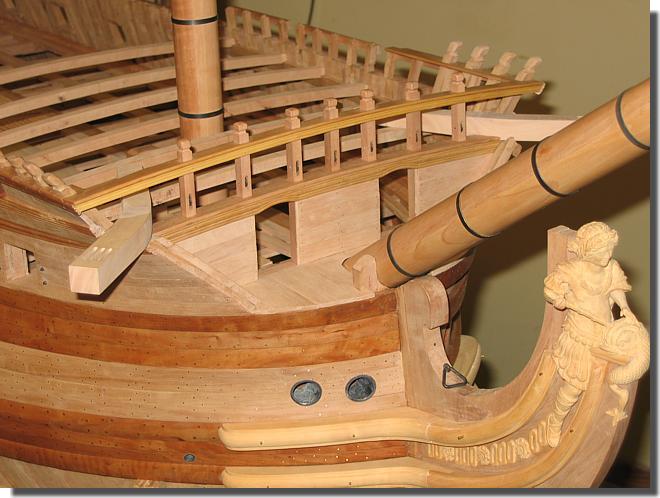
Le fermeture de la coque est maintenant terminée sur l'avant du vaisseau.
L'avant très "pincé" du Fleuron ne permet pas de disposer de sabords de chasse,
les portes d'accès à la poulaine en font office.
The hull is now completely closed at the bow of the vessel.
The very "pinched" bow of the Fleuron does not allow for bow chase gun ports,
but the beak head access doors will serve the purpose.
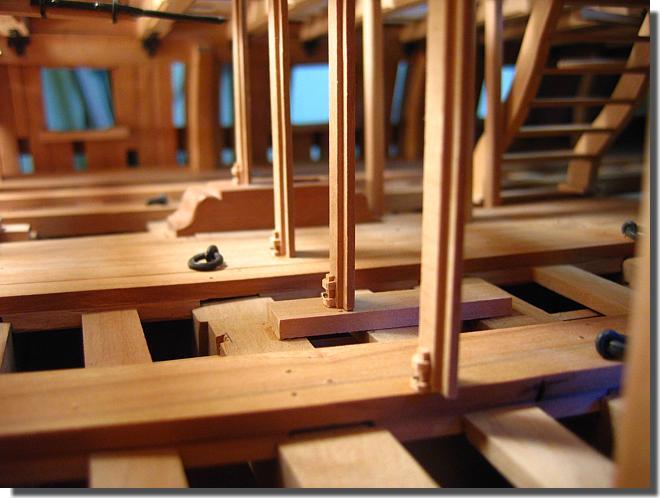
Nous sommes maintenant à l'arrière sur le premier pont, ces montants sont ceux de
la cloison de la grande chambre.
Cette cloison étant démontable, il est nécessaire que les montants puissent être
rapidement enlevés au moment du branle bas de combat..
Le système de fixation est donc constitué de crochets et de targettes que J.
Maillière a choisi de représenter en bois,
elles devraient normalement être réalisées en fer.
We are now in the after end of the gun deck, these stanchions will support the
partition wall of the great cabin. This wall being removable, it is necessary
that the stanchions are able to be quickly taken up the moment the battle swings
into action. The stanchions are thus secured by hooks and bolts that J.
Mallière has chosen to represent in wood. Normally they would be made of iron.
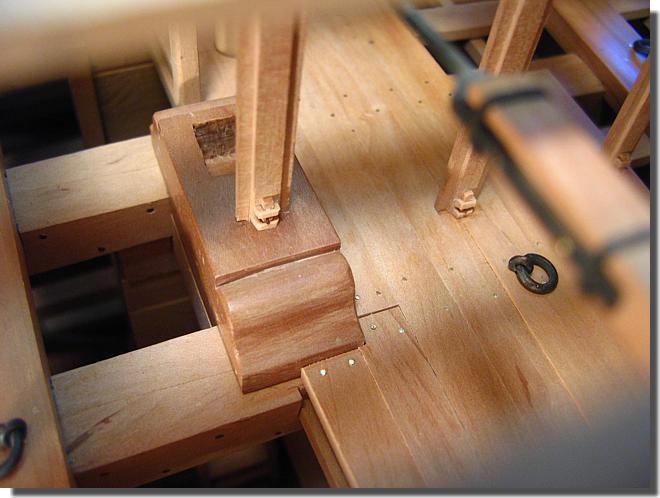
Une autre vue du pied des montants avec notamment celui qui est placé sur la
carlingue du mât d'artimon.
Another view of the foot of the stanchions with, notably, the one that is sited
on the mizzen mast step.
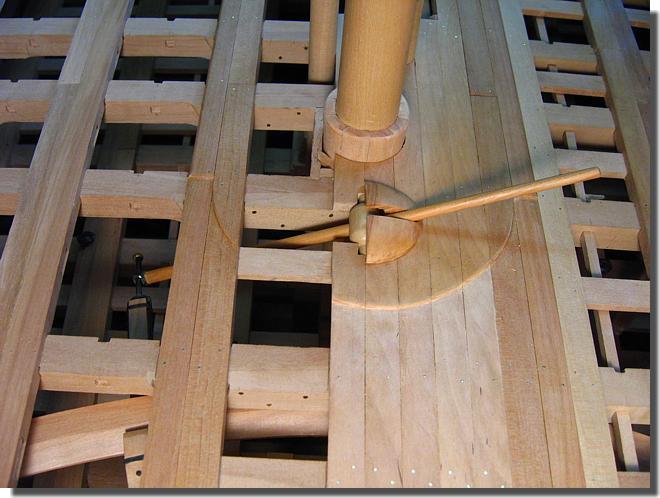
A l'époque du Fleuron, on n'utilise pas encore la barre à roue mais un autre
système appelé "manuelle".
Nous sommes donc ici sur le deuxième pont, en arrière du mât d'artimon et on
peut observer
l'installation de la manuelle qui est le nom du bâton de manoeuvre.
Notez la diminution de l'épaisseur de la partie centrale du bordage du pont.
At the time of the Fleuron, vessels did not yet have a helm wheel, instead they
used a tiller system. We are now here on the upper deck, aft of the mizzen mast
and we can watch the installation of the tiller, which is the name of the
steering gear. Note the reduction in thickness from its central part to the
deck planking.
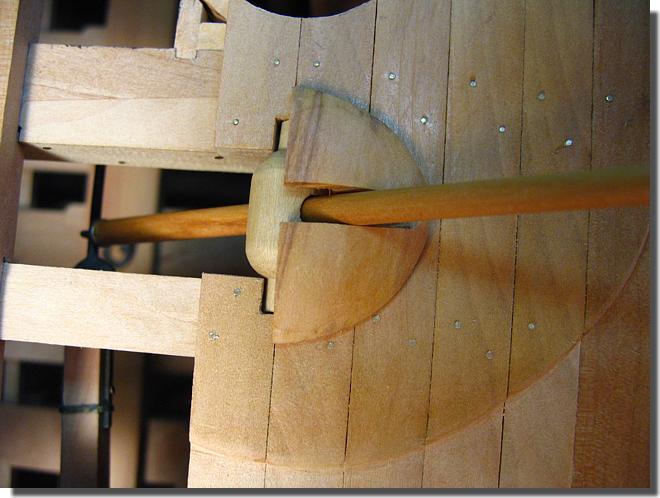
Vu de plus près, on voit très bien ici le passage du bâton de la manuelle dans
une noix où
il peut coulisser. Il suffit d'agir latéralement sur la manuelle pour déplacer
le timon du gouvernail.
La noix est recouverte d'un étambrai mortaisé pour le passage de la manuelle, seule
la moitié tribord a été représentée ici.
Seen from close up, one can clearly see that the steering gear slides through a
wooden hound. Lateral action only was sufficient to move the rudder.
Only the starboard half of the hound is represented here. The complete hound
would have a mortised notch running straight across it for the passage of the
tiller.
|